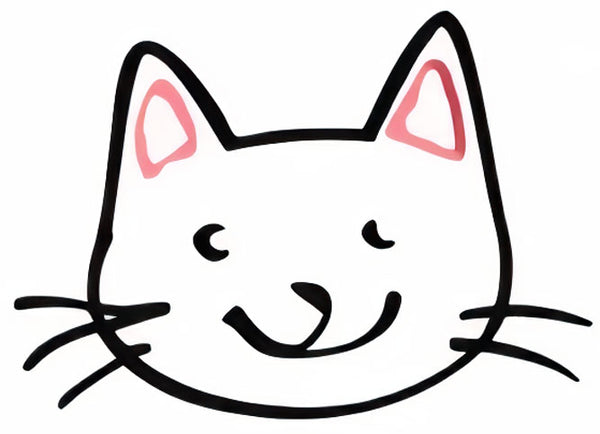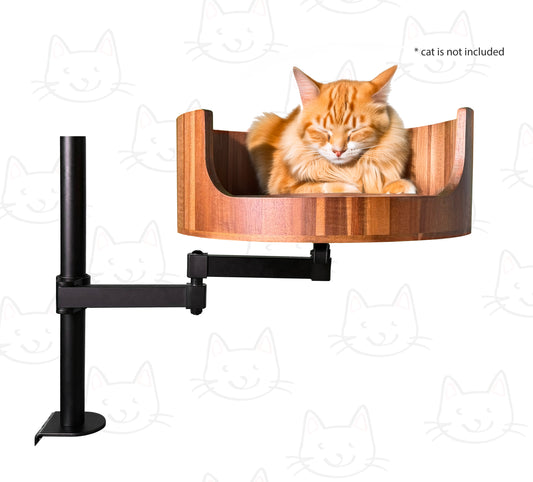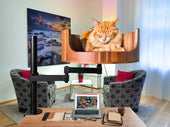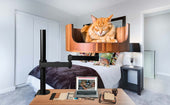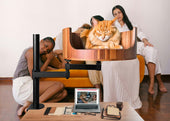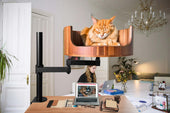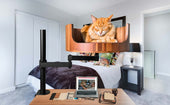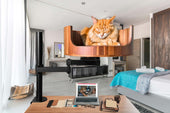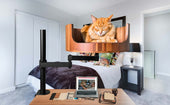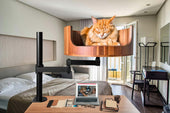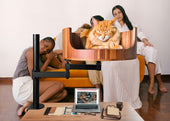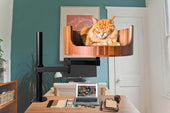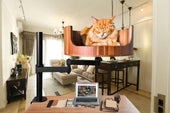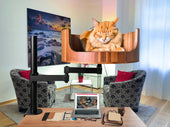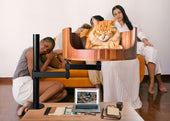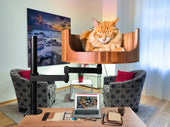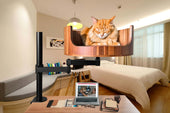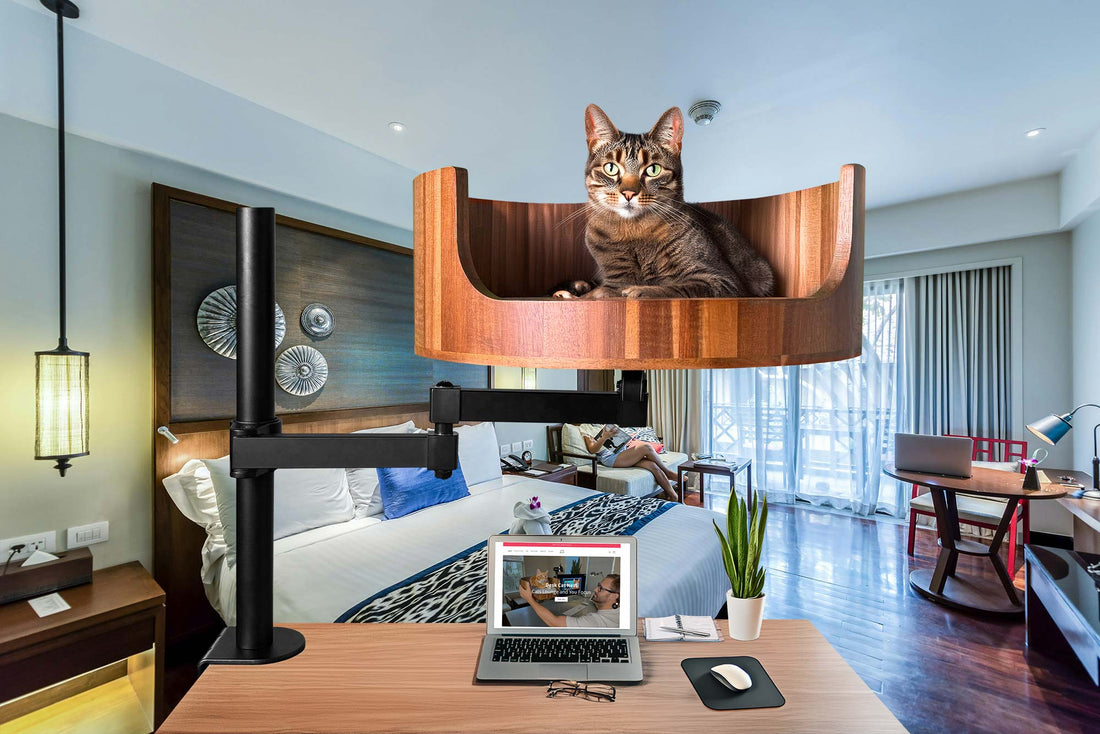
My Cat Talks to Me: Understanding Feline Communication
Share
Have you ever found yourself having full-on conversations with your cat, only to be met with a blank stare or a meow in response? While it may seem like our feline friends aren't very talkative, the reality is that they communicate with us in a variety of ways that we often overlook. In this article, we will explore the complex world of feline communication, from purrs and meows to body language and vocal cues, to help you better understand what your cat is trying to tell you.
One of the most fascinating aspects of feline communication is how cats use a combination of vocalizations and gestures to convey their emotions and needs. By paying attention to your cat's meows, purrs, trills, and body language, you can start to decipher what they are feeling and how they are trying to communicate with you. Additionally, understanding the subtle nuances of feline communication can help improve your bond with your cat and ensure that their needs are being met. So next time you find yourself talking to your cat, remember that they may be trying to tell you something important – if only you know how to listen.
1. Cats communicate through a variety of vocalizations, body language, and behaviors to express their needs and emotions.
2. Understanding common feline communication cues, such as meowing, purring, tail movements, and facial expressions, can help strengthen the bond with your cat.
3. Paying attention to your cat's vocalizations and body language can provide valuable insights into their moods, preferences, and health.
4. By actively listening and responding to your cat's communication signals, you can better meet their needs and create a more harmonious relationship.
5. Developing a deeper understanding of your cat's unique communication style can lead to a more fulfilling and enriching companionship.
The Sounds Cats Make
Cats communicate through a variety of sounds, each with its own meaning. For example, a purring cat is typically content and happy, while a hissing cat may be feeling threatened or frightened. Meowing is a form of communication between cats and their human companions, and can signify anything from hunger to wanting attention. Understanding the various sounds cats make can help you better communicate with your feline friend.
Body Language
In addition to vocalizations, cats also use body language to communicate. A cat with its tail held high and ears forward is likely feeling confident and friendly, while a cat with flattened ears and a puffed-up tail may be feeling defensive or scared. By paying attention to your cat's body language, you can better understand how they are feeling and respond accordingly.
Facial Expressions
Cats also communicate through facial expressions, including gestures like blinking and slow blinking. A slow blink from a cat is a sign of trust and relaxation, while wide eyes with dilated pupils can indicate fear or excitement. By observing your cat's facial expressions, you can gain valuable insight into their emotions and build a stronger bond with them.
Scent Marking
Cats use scent marking as a form of communication, rubbing their bodies against objects or people to leave their scent. This behavior helps them establish territory and communicate with other cats. By allowing your cat to engage in scent marking in a safe and controlled environment, you can help meet their natural communication needs and prevent unwanted behaviors like spraying.
Case Study: Bonding Through Communication
One example of how understanding feline communication can strengthen the bond between cats and humans is the case of a rescue cat named Luna. Luna was initially shy and reserved, but through consistent efforts to communicate with her through vocalizations, body language, and scent marking, her owner was able to gain Luna's trust and build a strong bond with her. By learning how to communicate effectively with Luna, her owner was able to provide her with the love and support she needed to thrive in her new home.
## Frequently Asked Questions
### Can the Desk Cat Nest help with my cat talking to me?
Yes, the Desk Cat Nest can provide a cozy and comfortable space for your cat to relax, which may help reduce their need to constantly talk to you for attention or playtime.
### Will my cat actually use the Desk Cat Nest?
While we can't guarantee that every cat will immediately take to the Desk Cat Nest, many feline friends enjoy the privacy and security of having their own designated space to rest and observe their surroundings.
### Is the Desk Cat Nest easy to assemble?
Yes, the Desk Cat Nest comes with simple assembly instructions and all necessary hardware. It can be easily set up in just a few minutes without the need for any specialized tools.
### Can the Desk Cat Nest accommodate larger cats?
The Desk Cat Nest is designed to comfortably accommodate cats of various sizes. However, we recommend checking the dimensions of the product to ensure it will be spacious enough for your particular feline friend.
### How do I clean the Desk Cat Nest?
The Desk Cat Nest can be easily cleaned by wiping it down with a slightly damp cloth or using a gentle pet-safe cleaner. The removable cushion cover is also machine washable for added convenience.
In conclusion, the Desk Cat Bed is a valuable choice for enhancing communication between you and your feline friend. By providing a comfortable and dedicated space for your cat to relax while still being by your side, this innovative product encourages bonding and interaction. The elevated design of the Desk Cat Bed also allows your cat to feel safe and secure while still being able to observe and engage with you during your work or study sessions. With its cozy cushioning and sturdy construction, the Desk Cat Bed not only promotes a closer connection with your cat but also provides a cozy retreat for them to enjoy day in and day out. Invest in a Desk Cat Bed today and experience the transformative power of having your cat by your side as they chat, purr, and meow their way into your heart.
